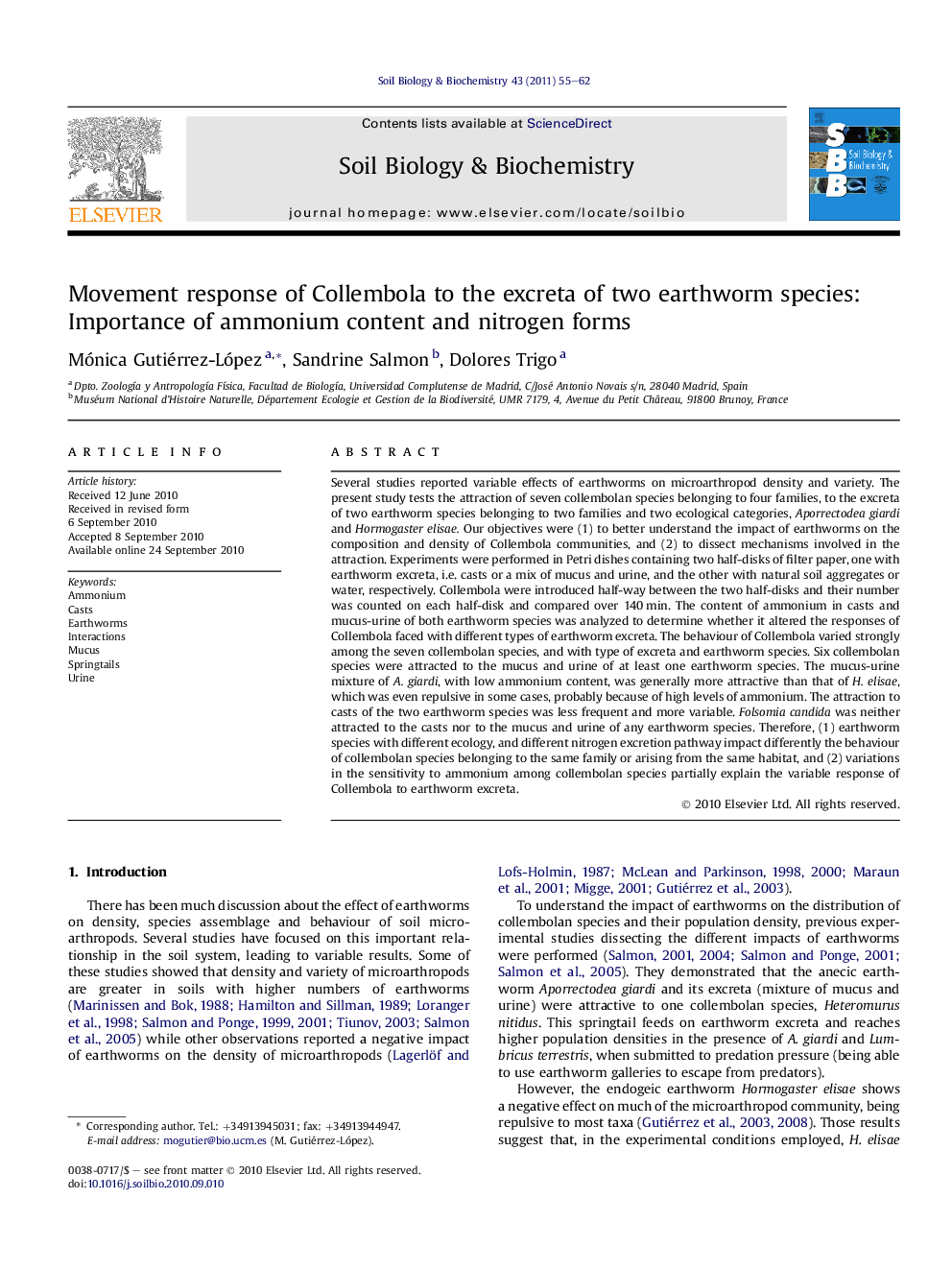| کد مقاله | کد نشریه | سال انتشار | مقاله انگلیسی | نسخه تمام متن |
|---|---|---|---|---|
| 2025705 | 1070007 | 2011 | 8 صفحه PDF | دانلود رایگان |

Several studies reported variable effects of earthworms on microarthropod density and variety. The present study tests the attraction of seven collembolan species belonging to four families, to the excreta of two earthworm species belonging to two families and two ecological categories, Aporrectodea giardi and Hormogaster elisae. Our objectives were (1) to better understand the impact of earthworms on the composition and density of Collembola communities, and (2) to dissect mechanisms involved in the attraction. Experiments were performed in Petri dishes containing two half-disks of filter paper, one with earthworm excreta, i.e. casts or a mix of mucus and urine, and the other with natural soil aggregates or water, respectively. Collembola were introduced half-way between the two half-disks and their number was counted on each half-disk and compared over 140 min. The content of ammonium in casts and mucus-urine of both earthworm species was analyzed to determine whether it altered the responses of Collembola faced with different types of earthworm excreta. The behaviour of Collembola varied strongly among the seven collembolan species, and with type of excreta and earthworm species. Six collembolan species were attracted to the mucus and urine of at least one earthworm species. The mucus-urine mixture of A. giardi, with low ammonium content, was generally more attractive than that of H. elisae, which was even repulsive in some cases, probably because of high levels of ammonium. The attraction to casts of the two earthworm species was less frequent and more variable. Folsomia candida was neither attracted to the casts nor to the mucus and urine of any earthworm species. Therefore, (1) earthworm species with different ecology, and different nitrogen excretion pathway impact differently the behaviour of collembolan species belonging to the same family or arising from the same habitat, and (2) variations in the sensitivity to ammonium among collembolan species partially explain the variable response of Collembola to earthworm excreta.
Research highlights
► The behavior of collembolan species varied with the type of excreta of earthworms (probably own to nutritional quality and ammonium concentration), their nitrogen excretion pathway, and their ecology.
► The mucus–urine mixture of A. giardi, with low ammonium content, was generally more attractive than that of H. elisae, which was even repulsive, probably because of high levels of ammonium.
► The attraction to casts of the two earthworm species was less frequent and more variable.
Journal: Soil Biology and Biochemistry - Volume 43, Issue 1, January 2011, Pages 55–62